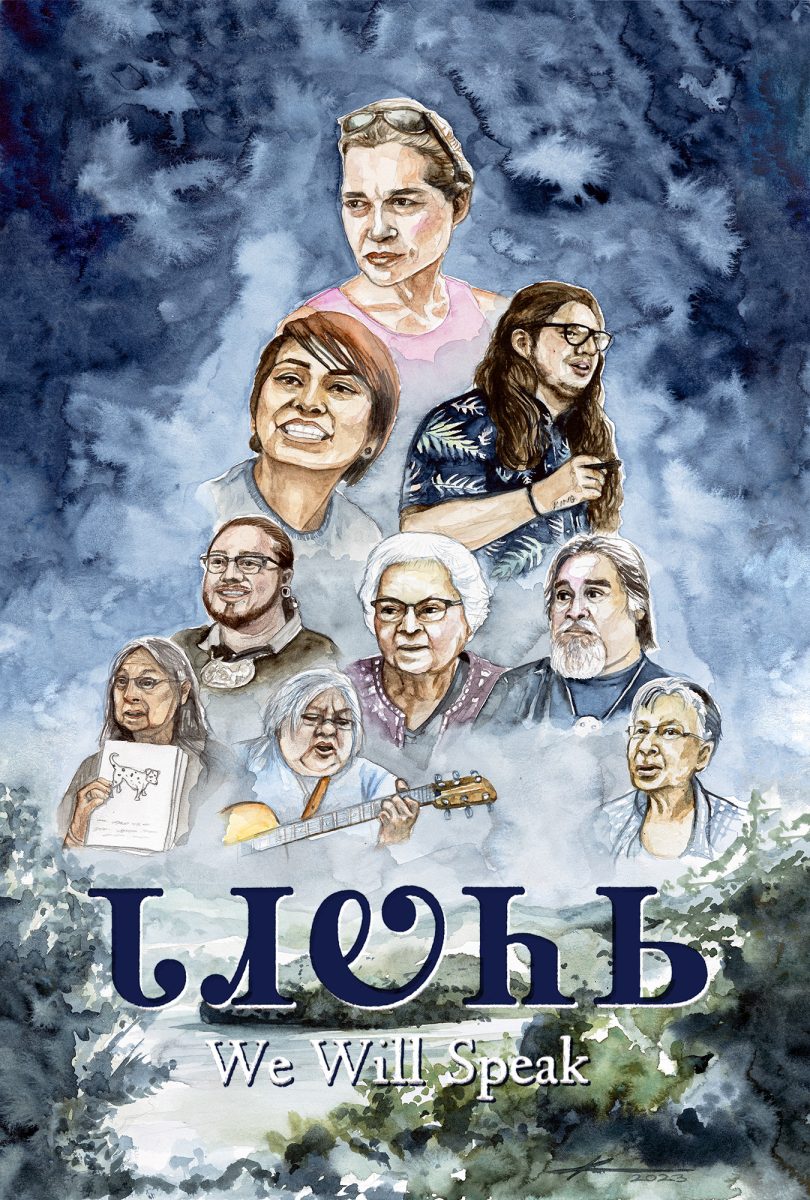When I entered Apollo Theatre, there was one thing that caught my eye: a crowd of people chatting right outside the door. Upon closer investigation, I realized that this crowd was amassed around the film’s directors, Schon Duncan and Michael McDermit. They were talking about the film and taking questions as people flooded into the theater. This acted as a perfect preamble to ᏓᏗᏬᏂᏏ (We Will Speak), which captures the efforts of the Cherokee people to preserve their language.
ᏓᏗᏬᏂᏏ follows the stories of multiple people from different Cherokee nations as they collaborate to create a school where their language can be taught and preserved. The film begins with the stark revelation that there is a state of emergency regarding the Cherokee language, with the number of speakers being reported to have dwindled to just about 2,000 people. ᏓᏗᏬᏂᏏ explores the connections between language and culture, emphasizing the importance of oral history and tradition within the Cherokee culture. In fact, the film goes beyond just this, working to explore art made for the consumption of the Cherokee people and serving as further motivation for Cherokee children and adults to learn about their culture and protect its existence.
The film takes its time to explore the complicated history of the Cherokee people and their language. It was one of the first Indigenous American languages to be transcribed, as far back as the late 1810s and early 1820s by Sequoyah, who was the first person to transcribe a language without being literate in any other language first. After this, the Cherokee people were pushed off their land by American colonization and the Trail of Tears. Eventually, through the use of boarding schools and other measures, the Cherokee people were discouraged, if not completely prohibited, from practicing their language and culture. After a long effort to perpetuate the separation of Cherokee children from their families and the continuation of the English-only curriculum, the number of Cherokee speakers drastically decreased.
ᏓᏗᏬᏂᏏ emphasizes the significance of education, exploring the concept as both a weapon used against the Cherokee and as their defense against cultural extinction. The legacy of boarding schools left behind generations of Cherokee too afraid to deviate from English, the lingua franca in the United States. This in turn created a gap that younger generations are now forced to fill. One important scene in the film depicts a son teaching a class on the Cherokee language and seeing his father join in on the lesson.
The film challenges the audience to look at language as something more than just the words we speak and instead as a legacy to uphold and a vehicle for cultural exchange. Language has the power to communicate ideas that go beyond what is said; it communicates the attitudes that a culture possesses — attitudes on life, death, and the universe. For example, the Cherokee language does not have a direct translation for “goodbye” that implies permanence; instead, they say something to the effect of “when we meet again,” implying that parting ways is only temporary, even in death. Beliefs like these cannot be fully conveyed and understood, much less passed down, without the native language used to express them.
Beyond the death of culture, the extinction of the Cherokee language within the United States has a tie to capitalism that often goes underrepresented. With English acting as the de facto primary language of the United States, the inability to speak it leaves a person unable to participate in the workforce, advocate for oneself, and bring home the money necessary to keep oneself and one’s family alive. Beyond this, the Cherokee language is not seen as a language of commerce like English, Spanish, or Mandarin, and is not often considered valuable enough by the “economy” to be worth learning or teaching. The economic aspect of this erasure forces Cherokee people to choose between their financial stability and cultural preservation.
The tribal members featured in the film not only open up a Cherokee school but also create a community for language learners and speakers to live together. The Cherokee understand that in order to keep their culture alive, they must rely on one another, embracing all sorts of language learners and their perspectives. This will ensure that the next generation can have a clear connection to their roots. Toward the end of the film, one of the tribal members says that they don’t see the Cherokee going extinct but, instead, evolving to fit the modern world. This film is a testament to that, showing that the Cherokee language and way of life are in a renaissance that will carry them far into the future.














